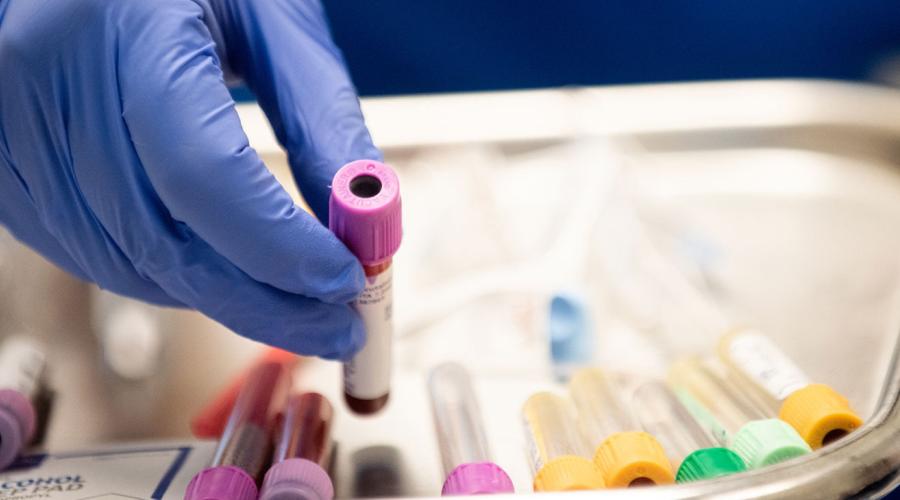
Less Toxic, More Targeted: New Treatment Shows Promise in Rare Childhood Leukemia
Juvenile myelomonocytic leukemia (JMML) is a rare and aggressive childhood leukemia, primarily diagnosed in infants and young children. The standard of care is a stem cell transplant, but it is only effective for half of patients.
“These young children are subjected to one of the most intensive cancer treatments we have available. If the first transplant doesn’t work, the only option is to try again with the same therapy. Still, only 30% of patients have a long-term response,” said Elliot Stieglitz, MD, associate professor of pediatrics in the Division of Oncology at UC San Francisco.
UCSF has spearheaded JMML research for decades in search of more effective and safer treatments, leading to a recent multi-center clinical trial by Stieglitz and peers with the Children's Oncology Group. The trial tested the efficacy of the drug trametinib in children with relapsed or chemotherapy-resistant JMML.
The Path to a New Treatment
The results of the trial, published in Cancer Discovery, show that a majority of the 10 patients derived a clinical benefit from trametinib, with three children experiencing resolution of leukemia-related symptoms and four additional patients gaining enough strength to become eligible for a curative transplant. In total, seven of the 10 children did not have their cancer progress and were still alive after 24 months.
“We observed that some patients were able to continue trametinib for as long as several years without requiring additional therapy. This raises the tantalizing possibility that certain JMML patients could be treated with trametinib long-term and avoid a stem cell transplant entirely,” said Stieglitz, the study’s first author.
Affecting approximately 100 children in the United States each year, JMML has seen few clinical trials. Over 10 years ago, a family donated leukemia samples to UCSF after their young boy succumbed to the disease. Those samples enabled a series of breakthroughs that led to this clinical trial.
“Discoveries at UCSF have detailed the mutations that cause the disease, identified biomarkers of response, and explored multiple routes for novel treatment strategies. Importantly, the positive results in this clinical trial were predicted by testing the same class of medications in mouse models of JMML,” said Stieglitz.
The JMML mutations converge on a specific cellular signaling pathway called RAS. Trametinib blocks a key protein downstream of this pathway, leading Stieglitz and colleagues to hypothesize that the drug could be an effective alternative treatment. This translation of lab-based discoveries into clinical advances highlights the bench-to-bedside approach that underpins science at UCSF.
Testing the Treatment in New Patients
Stieglitz and the team have launched a follow-up clinical trial to bring trametinib to newly diagnosed JMML patients. Previous research found that the number of mutations involved in JMML and the degree of DNA methylation (a chemical change to DNA) indicate how severe the cancer will be.
“Using a DNA methylation test developed in our lab, we can group patients based on risk. High-risk patients will receive trametinib in combination with chemotherapy to try to prevent relapse after a stem cell transplant. Lower-risk patients who respond well to the treatment will have the option to avoid a transplant altogether,” said Stieglitz.
Stieglitz also noted a secondary but important benefit from trametinib: many JMML-related symptoms quickly resolved in treated patients, potentially due to the drug unexpectedly stunting inflammatory signaling.
“While a stem cell transplant will still be required for most patients, there is new hope for young children with JMML based on our findings that trametinib may be a less toxic alternative,” said Stieglitz. “In the current era of precision medicine, it is critical that clinical trials are conducted with patients who are most likely to benefit, especially with extremely rare diseases.”
